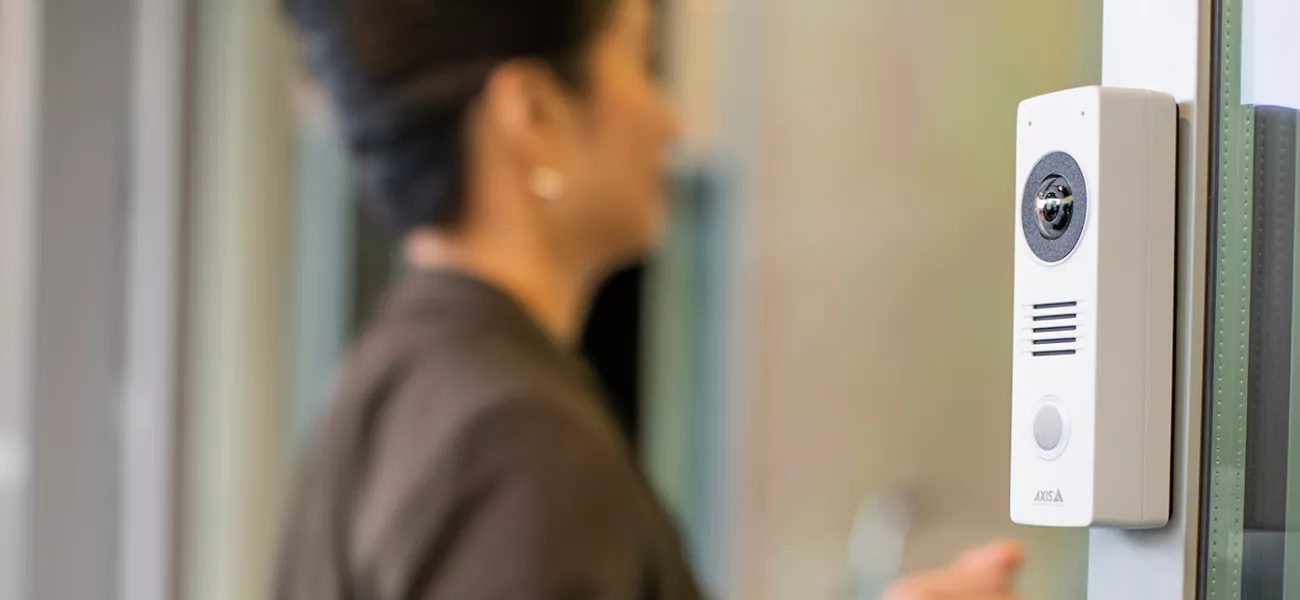
We’re all familiar with intercoms and use them regularly. At the entry to commercial and residential buildings – maybe even our own homes and workplaces – intercoms play an important role in verifying the identity of those wishing to enter.
What is perhaps less well know is how advances in IP-connected network intercoms – along with improved quality and more robust design – are allowing new use cases to emerge, enhancing safety and security in numerous environments, inside and outside.
Intercoms as part of an integrated security solution
Traditionally intercoms have been analogue single purpose devices, simply linking the intercoms device on a door to a building reception or resident’s apartment. By contrast, open standards-based network intercom devices can be integrated with other network security and surveillance technologies, from video cameras to audio devices to additional access control technologies. This opens a new world of potential applications.
Even in the ‘traditional’ use case of a building’s entry, this connectivity brings benefits. A visitor to a building can use the intercom to alert reception to their arrival, and while their identity can be verified visually through the intercom’s embedded video camera, additional credentials can be integrated as a further level of security.
For instance, this might be card readers for employees, or QR code readers for use with temporary visitor credentials. This can be particularly valuable in environments such as school and college campuses, where ensuring that only those authorized can gain access is essential. In addition, access can be granted from a mobile phone, IP phone, or video management system (VMS), further enhancing flexibility.
The cameras within network intercoms devices have also improved immeasurably in quality and field of view. Fisheye lenses now allow for not only the visitor to be seen, but for more of the surrounding area to also be in view, which guards against unauthorized individuals sneaking into a building alongside a verified visitor (whether the visitor is a willing accomplice or under duress). In certain environments, operators can use nearby video surveillance cameras to complement intercoms and give a broader view of the building entry.
Network intercoms in public spaces
A further advancement in network intercoms has been in robustness. Now designed to handle anything that people or nature throw at them, network intercoms devices can be built into a wide range of urban infrastructure, serving public safety goals in any environment.
From being built into bus stops to standalone emergency stations and help points, network intercoms allow people to call for help and assistance in the quickest, most direct way possible, whether concerned for their own safety, or reporting incidents and accidents.
Again, the integration of network technologies assists operators in providing the best and most timely assistance. Accessing nearby surveillance cameras can give a broader view of the scene and incident, essential in assessing its seriousness (or identifying a false alarm) and alerting the most appropriate first responders. Network audio devices can then enable broader communications to people in the area, notifying them of the situation, passing on instructions, and ensuring that access is clear for first responders.
Clear communications and a complete view
In essence, network intercoms enable quick, efficient, and clear communications between parties, with the integrated video capabilities and connection to broader surveillance and security technologies supporting the most appropriate response. Whether that’s as simple as allowing a visitor into a building or responding to a large-scale incident in a city street, network intercoms plays a key role in public safety.
Click here for more information about 2N's intercoms.
